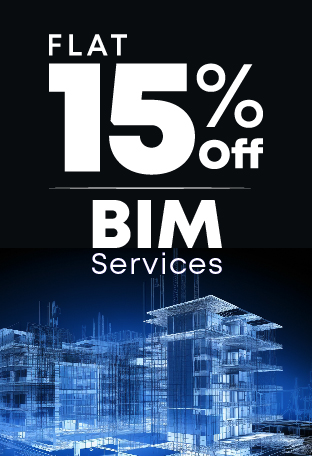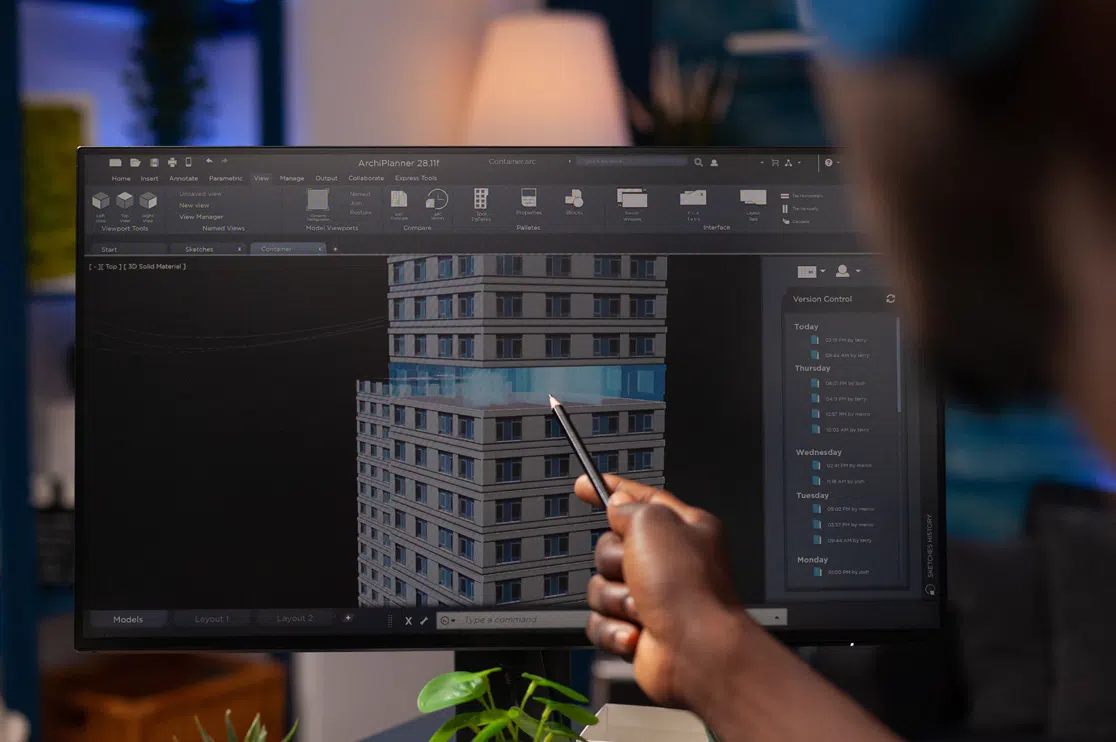Building Information Modeling (BIM) addresses many challenges in the construction industry, and several countries have nationwide regulations mandating the use of BIM solutions for government projects.
These countries conspicuously do not include the US.
In this article, we’ll cover the US’ adoption of BIM software and solutions and where the country can expect to go from here.
Table of Contents:
Introduction to BIM Solutions in the US
BIM was, in fact, developed in the US itself. In 1974, Charles M. Eastman published the first description of a virtual model of a built structure.
One could not be faulted, then, for being surprised that BIM is not mandatory for all government construction projects in the US.
However, there are many reasons for this. A prominent one is that there is no single agency in the federal government that can mandate BIM solutions for every public project across the country, according to Steve Jones of Dodge Data & Analytics.
Instead, many large federal agencies have introduced BIM mandates. There are also steps at the local level. For example, in 2010, Wisconsin decreed that BIM would be required on state projects with a budget of 5 million USD or more, as well as on any new construction with a budget of 2.5 million USD or more.
The Current BIM Market & Forecasts
The global BIM market size is projected to touch 15,892 million USD by 2027 at a CAGR of 15.2%. For North America, the CAGR is expected to be 13.2% between 2022 and 2027.
Note that the Covid-19 pandemic has had a relatively low impact on the BIM market. Lockdowns enabled widespread adoption of BIM so that projects could continue in a digital environment.
Factors Driving the Adoption of the BIM Process
BIM is set to be the future of the built asset industry. It is already present in many countries. Here are the major factors that are driving its adoption:
- The rise of remote work. BIM software can be used remotely to manage projects, sales, customer contracts, and other activities. Many owners and builders now believe that efficiency can be boosted by teaching workers a basic foundation of digital technologies.
- Increased infrastructure and urbanization initiatives also have a role to play. We have entered a new era of construction and design, thanks to interconnection, digital design tools, computer-controlled connectivity and computer-controlled manufacturing. This provides notable advantages over older technologies such as CAD systems and paper-based designs.
- BIM addresses complications such as fragmented delivery methods and various parties involved, as well as the growing need for automated models.
- Integration of BIM with AR/VR improves communication between stakeholders and provides enhanced visualization for engineers and designers.
This interest in BIM is not new. According to McGraw-Hill Construction, the percentage of BIM users in North America grew from 17% in 2007 to 81% in 2012. By 2014, 75% of architects and 55% of contractors were using BIM on more than 60% of their projects.
What Have Been the Benefits of BIM Adoption?
The National BIM Standard-United States® (NBIMS-US™), which depends directly on the National Institute of Building Sciences (NIBS), have put forth the following figures regarding BIM adoption in the US.
- 25% increase in productivity of AEC sector
- 25% decrease of manpower usage
- 5% decrease of final construction costs
- 5% increase in project completion speed
Challenges & Barriers in the BIM Market
While the use of BIM in construction management is certainly increasing, its growth is currently hindered by the following factors.
- The “BIM hangover” phenomenon. BIM software are not advancing as they used to, and one software (that is, Autodesk) has a near monopoly.
- Lack of government-backed support. There is not enough funding from the government and no country-wide BIM mandate.
- Good training in the BIM process and BIM tools requires certificate programs, which require a budget that many companies are unwilling or unable to provide.
- Many companies are under the impression that BIM only benefits large-scale, complex projects, so they do not make the effort to migrate to BIM if they mainly work on smaller projects.
- In a similar vein, BIM is not seen as a viable option for residential construction. This is a bigger misconception.
- BIM data often comes in proprietary formats, which can be restrictive. The answer to this is openBIM, which is slowly growing in popularity.
- Resistance to change. It can be difficult to convince professionals who have been working with certain routines for many years to transition to BIM, especially considering the cost and time it will take.
BIM in the Future
Technology in the built asset industry is evolving at such a rapid rate that it would not be entirely shocking if BIM finds itself no longer relevant ten years down the line. Having said that, all current evidence points to the continued use and evolution of BIM.
Here are some current trends and predictions for BIM.
1. Automation & Digital Twins
The development of a “digital twin,” that is, a detailed virtual representation of the built asset, can help anticipate potential issues in the design and mitigate them to reduce risks. Such a method would work for any structure, whether an airport, a bridge, or a hotel. Currently, most companies use BIM clash detection for these purposes.
As companies continue to automate their processes, the use of digital twins will become more prevalent. Such a layered approach will provide a more accurate and complete representation of the building information.
2. Growth of Data & IOT
We live in a world of data. This trend will only grow as IOT initiatives are adopted across industries globally.
To deal with this tsunami of data, we need to harness it effectively and utilize it efficiently for BIM in construction. Hence, the AEC world will have to connect to more data sources.
Construction data from IOT devices and drones can, for instance, be centralized in a CDE. This can be done alongside more traditional data such as specifications and models that are often used for BIM projects.
3. Sustainability Pledges & Mandates
As governments worldwide scramble to respond to the worsening climate crisis, sustainability or green mandates should not be surprising.
Some are already in place. For example, the California Energy Commission released a mandate in 2018 that requires all new residential buildings to be developed with solar panel technology. Copenhagen has pledged to become carbon neutral by 2025 – an ambitious feat, especially for a capital city.
Expect that these kinds of mandates and pledges will influence the usage of BIM in construction.
We live in the future. BIM is already an incredible process that uses incredible technology, and it will only become more so in the coming years.
If you want to join the businesses that are adopting BIM, simply contact BluEntCAD. We provide BIM services to architectural companies, general contractors, design-build contractors, MEP engineers, civil and structural engineers, MEP subtrades, and HVAC subtrades.
Our services include scan-to-BIM, Revit modeling, BIM clash detection, BIM family creation, and BIM training. Contact us now for BIM modeling services!
Maximum Value. Achieved.







 How AI BIM Modeling Shaping the Future of Residential Construction?
How AI BIM Modeling Shaping the Future of Residential Construction?  How BIM Services Enhance Collaboration, Design Choices, and Project Efficiency for Architects? – A Guide
How BIM Services Enhance Collaboration, Design Choices, and Project Efficiency for Architects? – A Guide  How is Artificial Intelligence in Construction Design Transforming Architectural Landscape?
How is Artificial Intelligence in Construction Design Transforming Architectural Landscape?  BIM Coordination Benefits for Contractors in the Preconstruction Stage
BIM Coordination Benefits for Contractors in the Preconstruction Stage